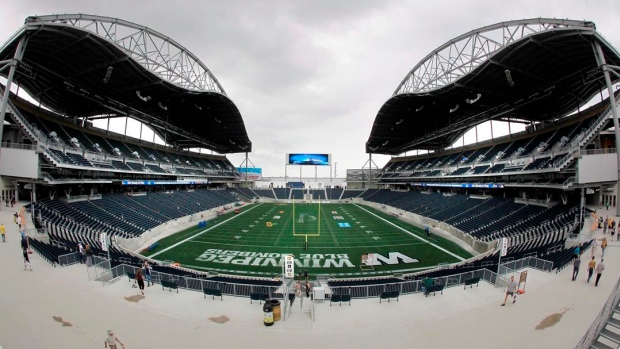May 19, 2022
CFL strike ends after league, players reach tentative agreement on new CBA
The first Canadian Football League strike in nearly 40 years ended Wednesday night, opening the door for the full resumption of training camps and the first on-time start to the regular season since 2019, Dave Naylor writes.
By Dave Naylor

The first Canadian Football League strike in nearly 40 years ended Wednesday night, opening the door for the full resumption of training camps and the first on-time start to the regular season since 2019.
The CFL and the CFL Players' Association reached a tentative seven-year deal on a new collective bargaining agreement (CBA) Wednesday, less than 96 hours after the strike began when talks broke off.
Monday’s preseason game in Saskatchewan between the Roughriders and Winnipeg Blue Bombers is being rescheduled – an announcement is expected on Thursday – but in terms of actual casualties because of this labour stoppage, that’s it.
The end result is a deal – which still has to be ratified by the league’s board of governors and CFLPA members – that produces measureable gains for the players in several areas including health and safety, revenue sharing, salary cap, and guaranteed contracts.
There are tangible measures to slow player turnover, which has long been a CFL problem ignored in collective bargaining.
The big question mark economically is how meaningful the revenue sharing formula will prove to be for the players, and whether they will truly be able to share in any league prosperity.
There is always much debate about the state of the business in Canadian football, but this deal suggests that not all is doom and gloom. Coming off two years in which the league suffered massive losses from a lost 2020 season due to the COVID-19 pandemic and significant ones off a reduced 14-game schedule in 2021, the CFL did not bargain like a league that was on its last legs.
It provided minimum annual increases to the salary cap that are double those prescribed in the last CBA. And the league signed a deal that provides far more than what’s been given in recent memory. All of which suggests there must be some optimism about what lies ahead, barely a year after the CFL parted ways with the idea of merging with the XFL.
So if there was so much ‘give’ from the owners side on this deal, what did they owners ‘get’ in return?
Essentially, besides the term of the deal, the league gained flexibility for its teams in how the league’s ratio of Canadians is applied. The CFL ratio is always the most hotly debated, misunderstood and controversial aspect of Canadian football – people tend to love it or hate it.
The league itself tends to love it … well, sort of.
There’s never been an intent to eliminate the league’s quota for 21 Canadian players on every roster, seven of whom have to be starters.
But reduce it? Sure, the league’s always been open to that and the players’ association has always opposed it.
The uncomfortable truth in all of this is reducing the ratio improves the quality of the game, and improving the quality of the game is something with which the league has become acutely concerned about of late. That’s not a knock on Canadians. It’s just a recognition that the numbers of players in the United States far, far, far outnumber those north of the border.
The sides came up with a solution that preserves the seven Canadian starters but provides for more flexibility for coaches to use American players than they would have been able to in the past. Specifically, veteran American players, those who’ve spent at least three years with their team or five in the league, will be allowed to play as Canadians in some circumstances.
That not only is going to put more of the best players on the field, it’s going to give additional value to American veterans, which slows roster turnover, another key issue this agreement effectively addresses.
Players have a strong incentive to re-sign with their teams, since that allows up to 50 per cent of the final years of their contracts to be guaranteed.
Overall, both the movement of players from team-to-team and out of the league should slow, which is a true win-win for players, fans and general managers.
It’s hard to imagine what the world of Canadian football will be like in 2029, when the new CBA expires.
No doubt much will have changed.
The league is marching into that future with a new collective bargaining agreement that addresses many longstanding issues in the CFL.
Who wins on the business side is hard to say, given all the uncertainties that lie ahead.
But right now all that matters to most is that collective bargaining has been put to bed and the CFL is finally ready to embark on a full season of football.

